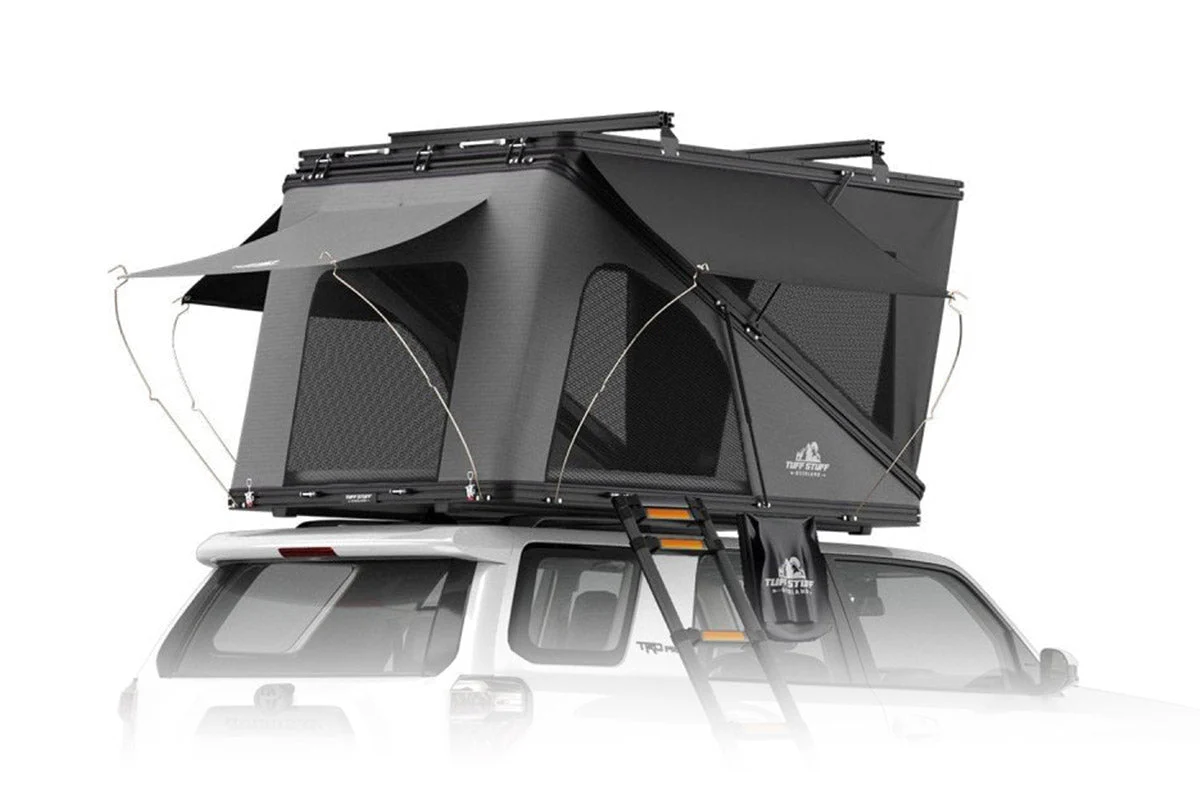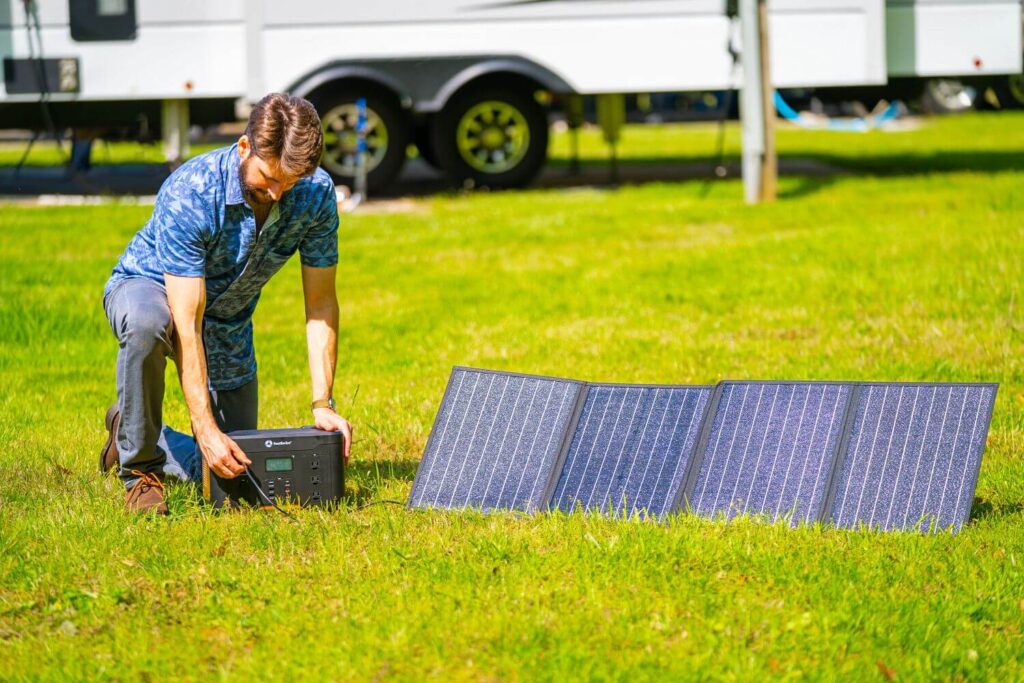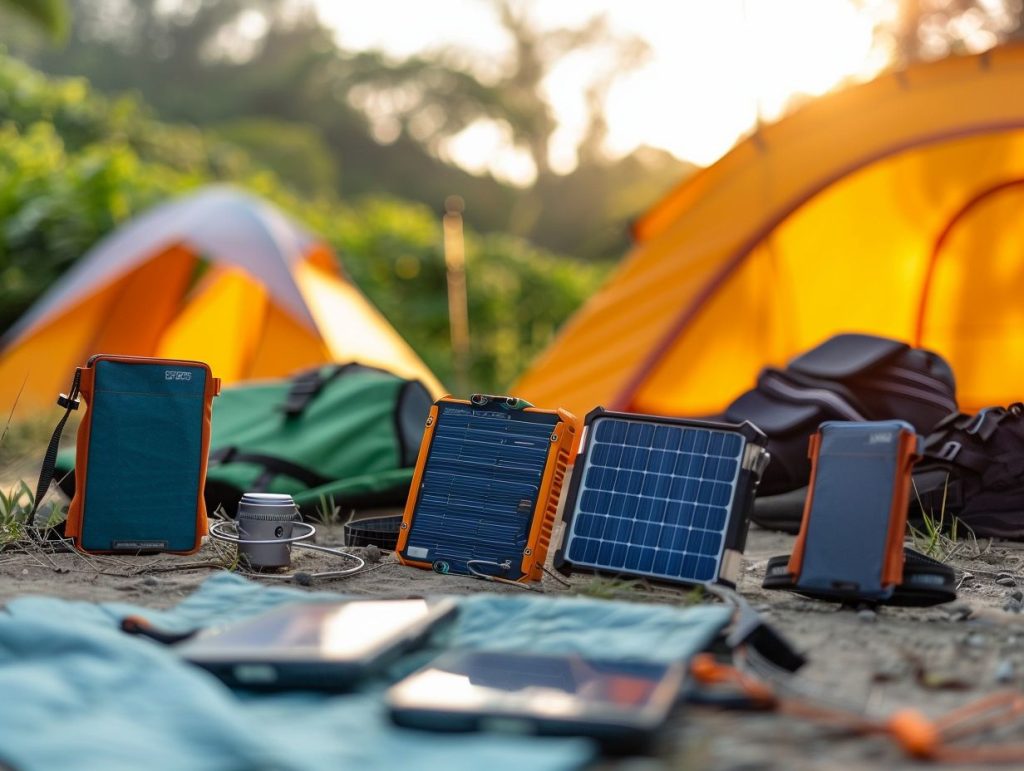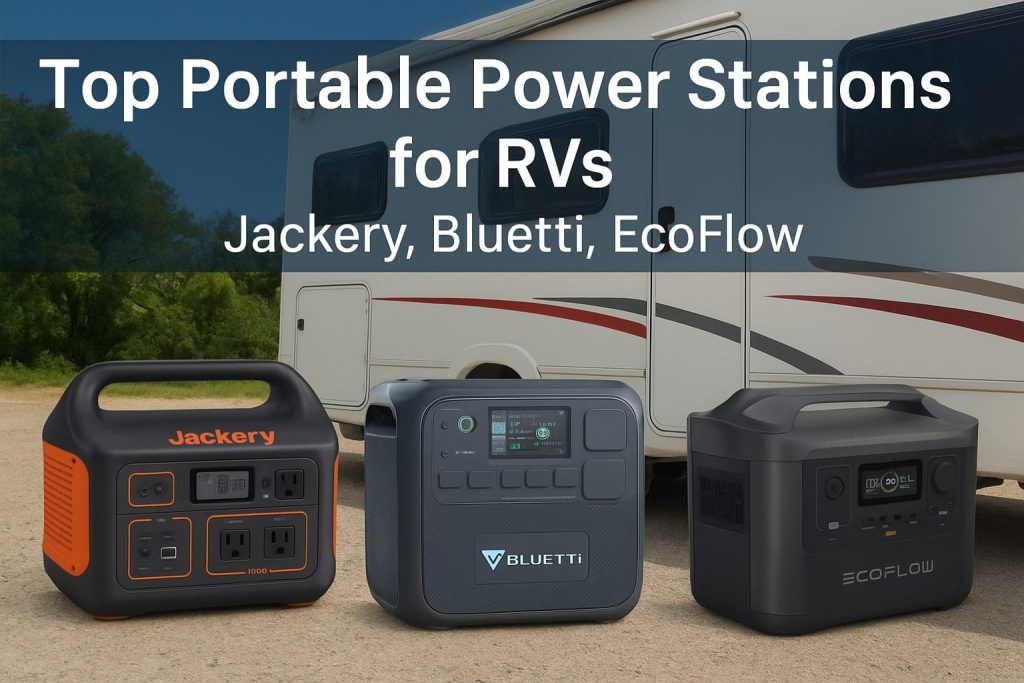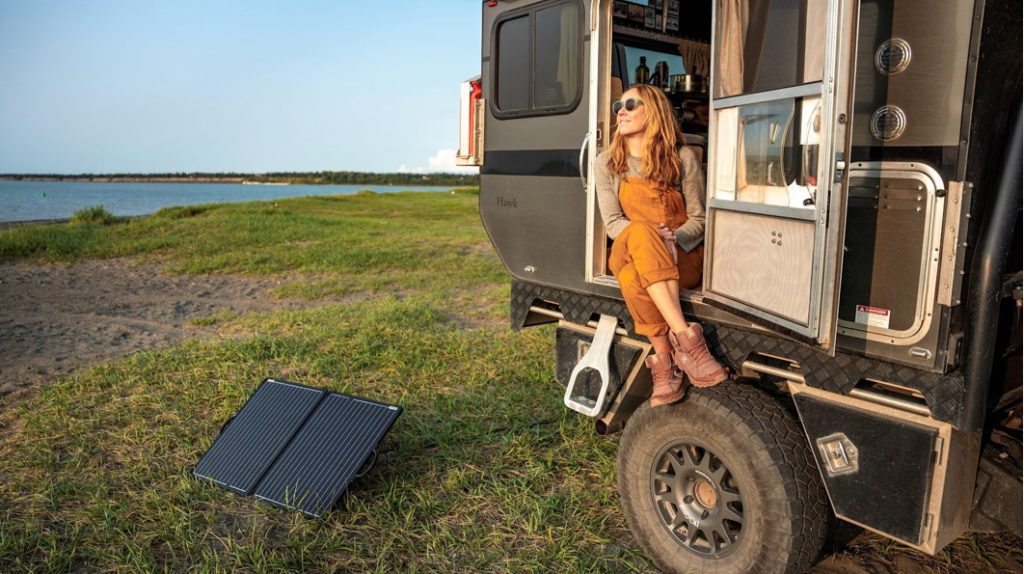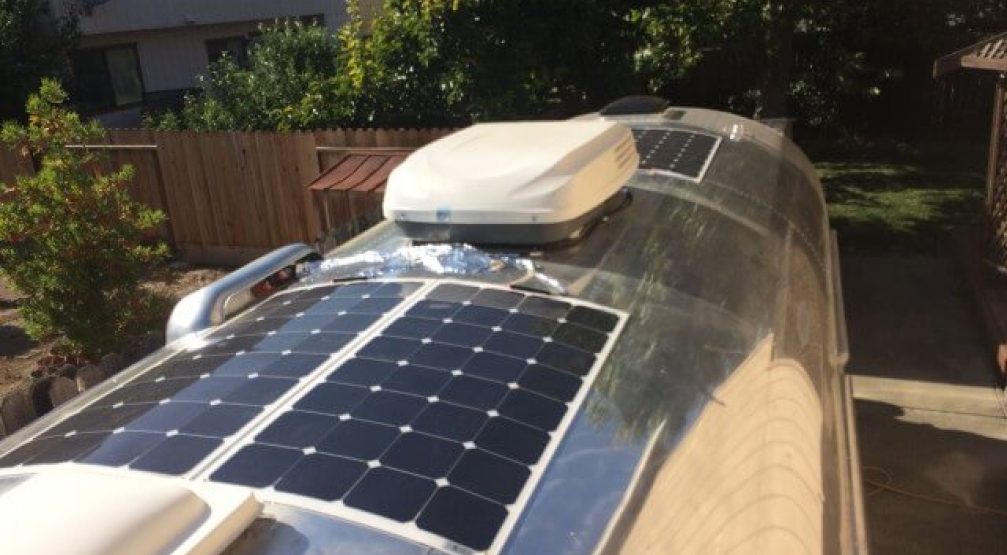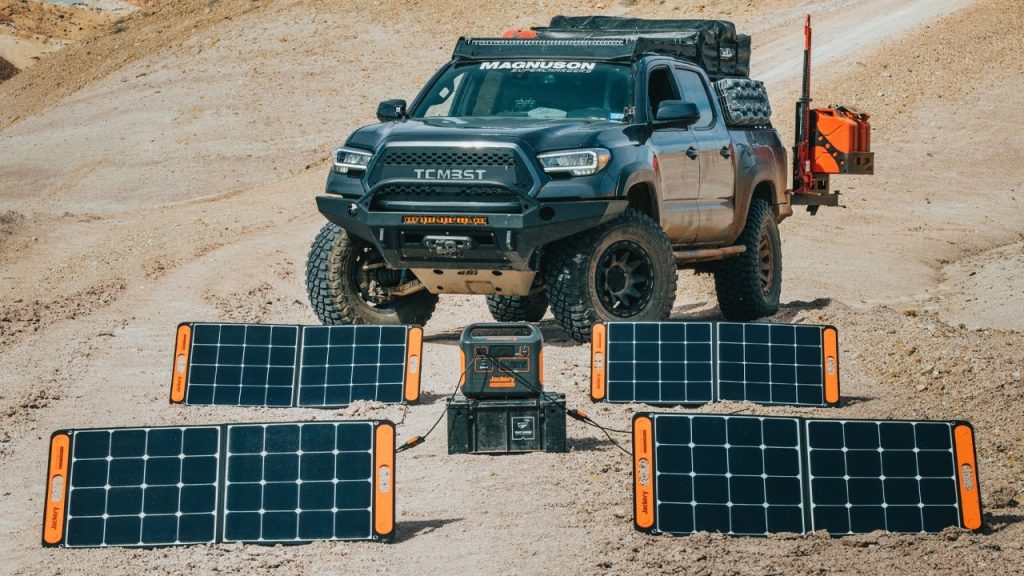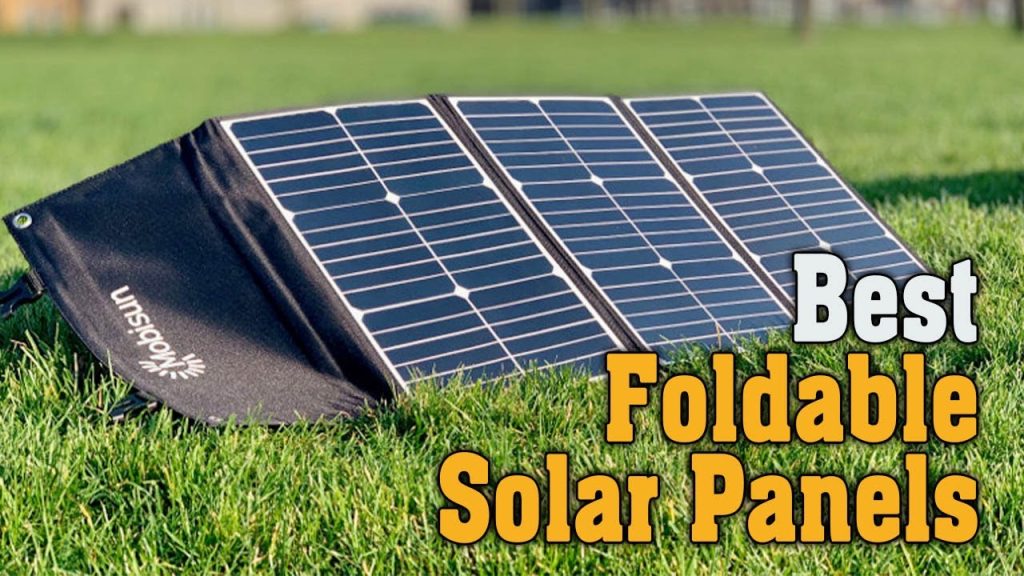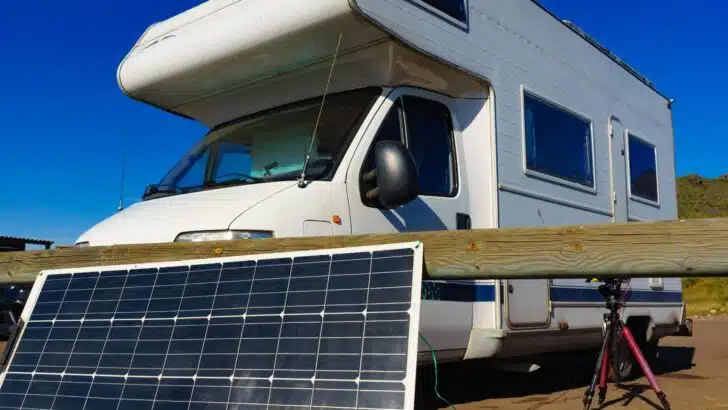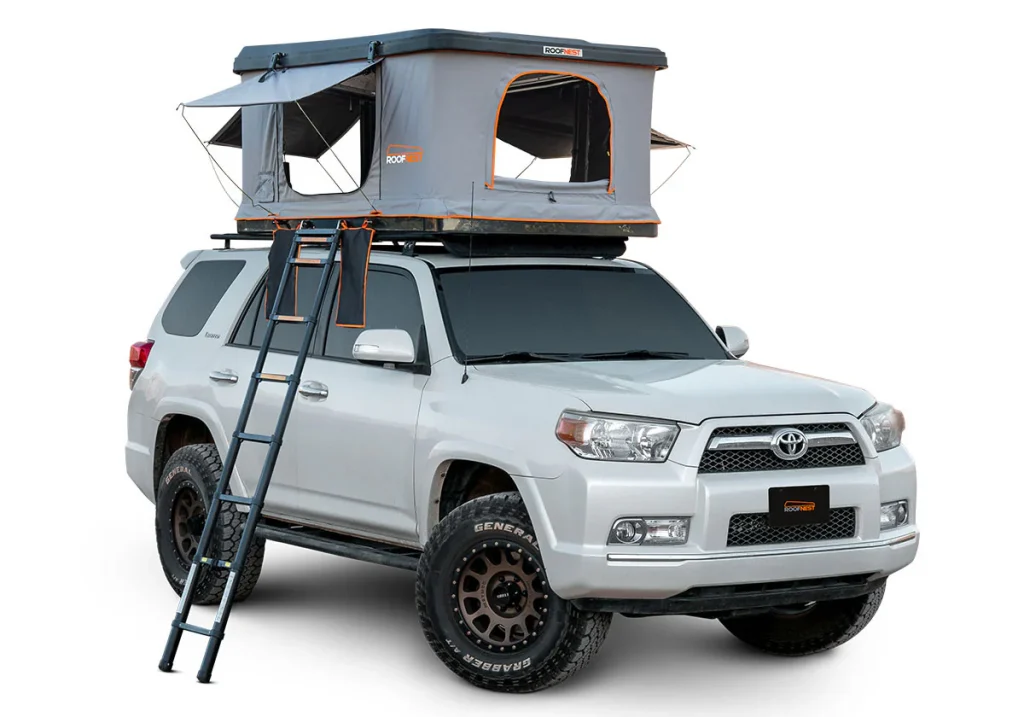Overlanding has exploded in popularity over the last few years, and in 2025, it’s more than just a trend—it’s a lifestyle. With rugged trails, remote landscapes, and off-the-grid adventures calling, having the right gear is essential. One piece of equipment that can make or break your trip? A rooftop tent (RTT).
Rooftop tents offer elevated sleeping quarters above your vehicle, protecting you from uneven ground, curious wildlife, and the elements. They’re fast to deploy, easy to pack down, and turn any SUV, truck, or crossover into a fully mobile campsite. Whether you’re a solo explorer or hitting the backcountry with your family, there’s an RTT tailored for your journey.
In this guide, we’ve field-tested and rated the best rooftop tents for overlanding in 2025. From high-end hardshells to affordable softshells, we evaluated them based on real-world use, factoring in durability, comfort, ease of setup, and weather resistance. So before investing in your next adventure companion, explore our top picks to find the RTT that fits your vehicle, budget, and wildest travel ambitions.
The Best Rooftop Tents of 2025
Best Overall Rooftop Tent
iKamper Skycamp 3.0 Mini
Rating: 9.7/10
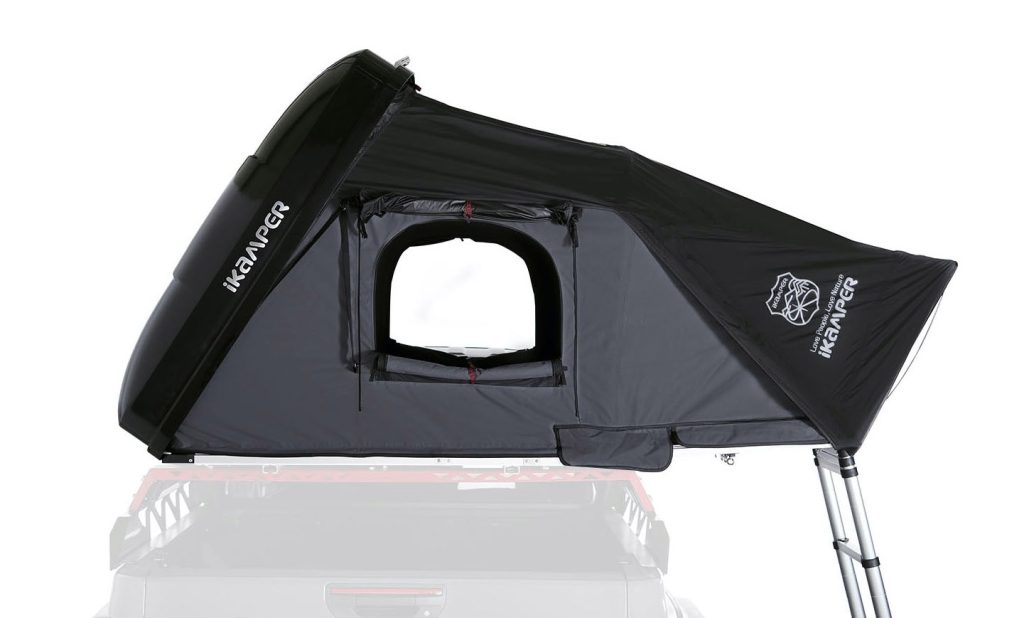
The iKamper Skycamp 3.0 Mini takes the top spot as the best overall rooftop tent in 2025. Designed for versatility, it’s compact enough to fit almost any vehicle—making it a favorite among solo travelers, couples, and even city-based overlanders. The standout feature is its ultrafast setup. You can go from packed up to ready for sleep in under a minute, thanks to its clever hardshell design and gas strut-assisted opening.
Built with top-tier materials, the Skycamp 3.0 Mini is both waterproof and wind-resistant, ensuring comfort in nearly any weather condition. The interior is well-insulated, and while the included mattress is high-quality, it may feel too firm for some users. Still, the overall quality, ease of use, and compact footprint make it the best choice for most adventurers.
Specifications
-
Dimensions open: 102″ x 101″ x 48″
-
Dimensions closed: 57.5″ x 55″ x 13″
-
Sleeping footprint: 83″ x 51″
-
Peak internal height: 46.5″
-
Weight: 125 lbs.
-
Static weight capacity: N/A
-
Minimum bar spread: N/A
Pros
-
Fits all vehicles
-
Ultrafast setup
Cons
-
Mattress may be too firm for some campers
Price
$3,895.00
Best Budget Rooftop Tent
Topoak Galaxy 1.0
Rating: 6.9/10
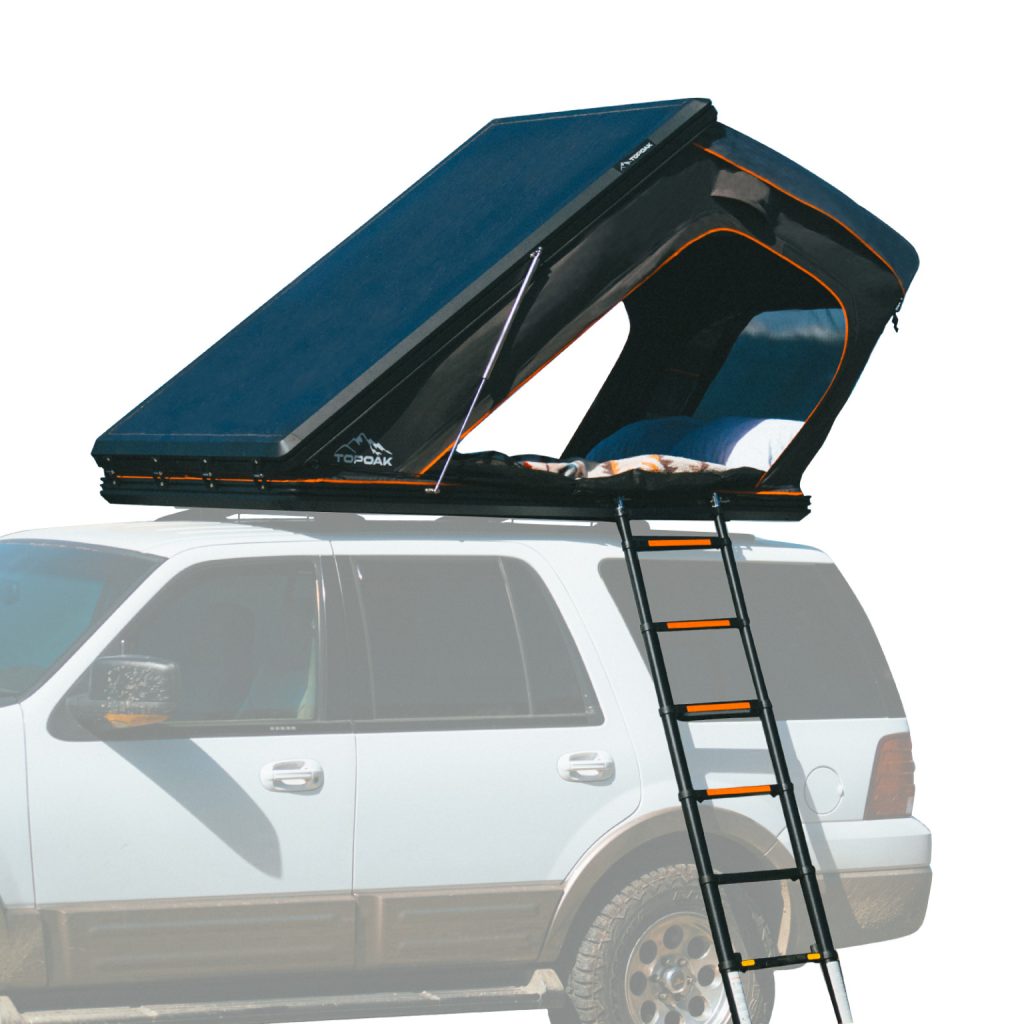
For campers on a budget, the Topoak Galaxy 1.0 is one of the most affordable hard-shell rooftop tents available in 2025. Despite its lower price tag, it still offers a surprisingly spacious interior, making it a great option for weekend warriors or those new to overlanding. The aluminum hardshell adds durability and weather protection, which is rare at this price point.
Inside, you’ll find useful storage options and enough room for two people to sleep comfortably. However, some downsides come with the budget-friendly design. The handwheels used for mounting can come loose over time, and the buckles don’t offer locking mechanisms—potentially reducing security. Still, if you’re looking for a functional, entry-level rooftop tent without breaking the bank, the Galaxy 1.0 is a solid pick.
Specifications
-
Dimensions open: 83″ × 56″ × 53″
-
Dimensions closed: 83″ × 56″ × 8″
-
Sleeping footprint: 79″ × 52″
-
Peak internal height: 53″
-
Weight: 176 lbs.
-
Static weight capacity: N/A
-
Minimum bar spread: 30″
Pros
-
Great price
-
Spacious interior volume
-
Ample interior storage options
-
Aluminum hardshell at this price point
Cons
-
No locking options
-
Handwheels for installation brackets come loose easily
-
Locking buckles could be prone to breakage
Price
$1,598.00
Best Soft Shell Rooftop Tent
Thule Approach M
Rating: 7.9/10
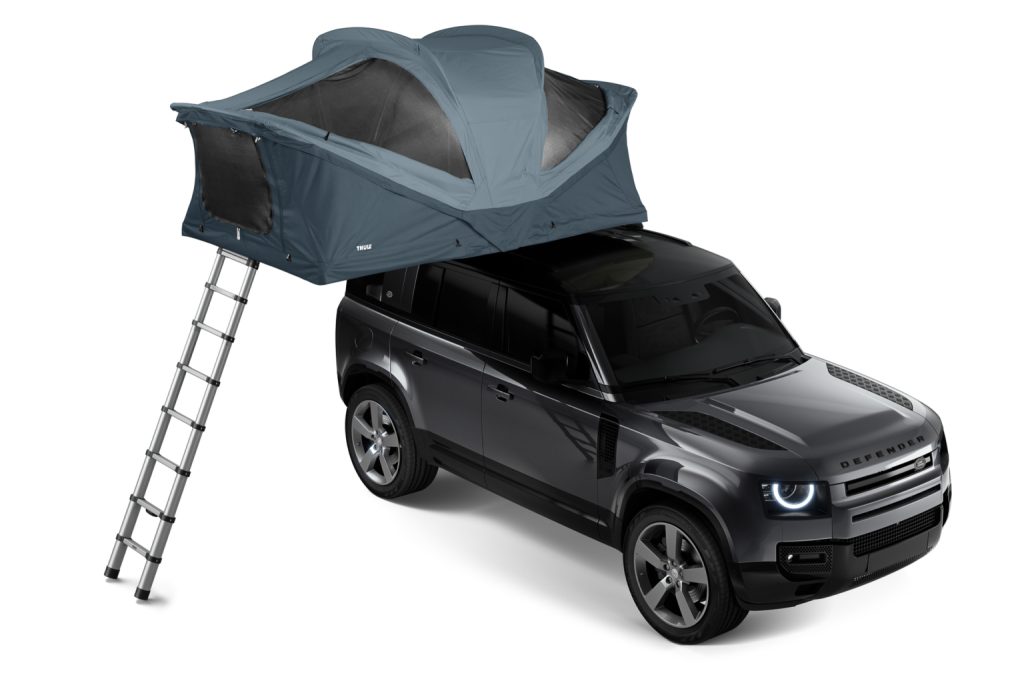
The Thule Approach M stands out as the best soft shell rooftop tent of 2025 thanks to its spacious interior, rugged construction, and user-friendly setup. Designed for comfort and practicality, this tent is ideal for two campers and can even accommodate a child or pet. It features a cavernous interior with comfortable foam flooring that makes sleeping outdoors feel like home.
Its construction is also noteworthy: the canopy is made from tough 600D water-resistant polyester, the rainfly is thermoplastic-coated nylon for excellent protection from the elements, and the cover is built from rubber-coated Cordura nylon for long-lasting durability. Setup and takedown are quick and easy, which is a big plus when arriving at camp late or needing to pack up in bad weather.
However, it’s not without quirks. The travel cover completely detaches from the tent, which can be a hassle to store. The ladder is a bit rough on bare feet, and installing the rainfly can be tricky the first few times. But overall, this tent offers an outstanding balance of comfort, durability, and ease of use.
Specifications
-
Closed dimensions: 49″ x 56″ x 11″
-
Open dimensions: 95″ x 56″ x 40″
-
Weight: 128 lbs.
-
Canopy material: 600D water-resistant polyester
-
Rainfly material: Thermoplastic-coated nylon
-
Cover material: Rubber-coated Cordura nylon
Pros
-
Super-easy and quick to deploy and stow
-
Cavernous interior for a 2+ person tent
-
Very comfortable foam flooring
-
Extremely robust and weatherproof construction
-
Easy to install for a rooftop tent
Cons
-
Travel cover completely separates from the tent
-
Ladder was very uncomfortable for bare feet
-
Rainfly a bit challenging to install
Price
$2,500
Best Premium Rooftop Tent
James Baroud Odyssey
Rating: 9.0/10
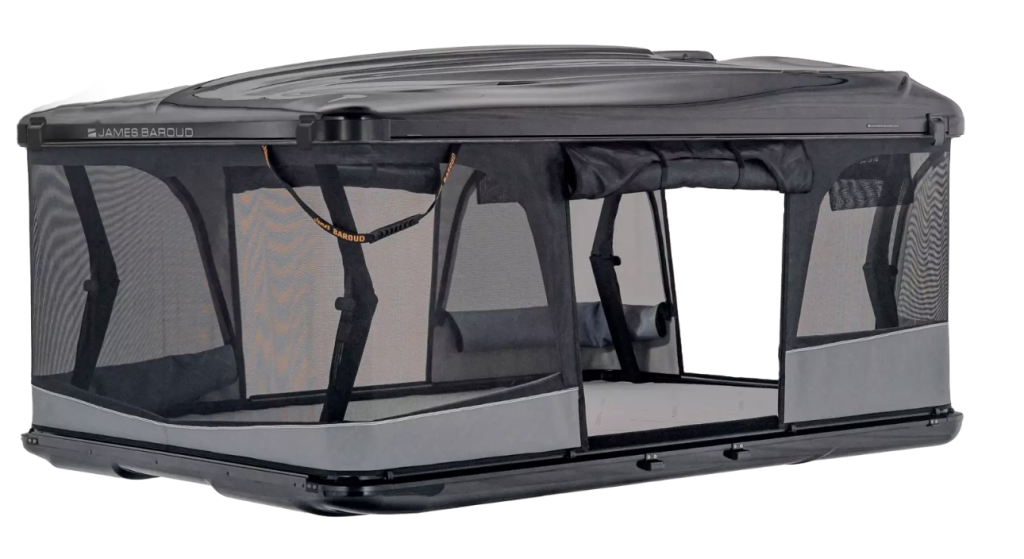
The James Baroud Odyssey is the top premium rooftop tent in 2025, delivering elite craftsmanship, high-end materials, and luxurious features. Designed for serious overlanders and campers who want the best of the best, this hardshell tent offers unparalleled ventilation, privacy, and comfort.
Its 360° windows allow full panoramic views and optimal airflow, while blackout curtains ensure complete darkness when you want to sleep in. One of the standout features is the built-in fan that vents condensation—a thoughtful detail that enhances comfort during humid nights.
Its high-strength shell and automatic opening system make setup smooth and effortless. However, premium quality comes at a premium price. Additionally, the protective awnings for windows aren’t included, and the ladder’s incomplete listing suggests that users may need to purchase one separately or confirm compatibility.
Specifications
-
Dimensions open: 79″ × 55″ × 40″
-
Dimensions closed: 79″ × 55″ × 13.5″
-
Sleeping footprint: 79″ × 55″
-
Peak internal height: 40″
-
Weight: 155 lbs.
Pros
-
360° windows
-
Full blackout curtains
-
Built-in condensation-venting fan
Cons
-
Weather protective awnings not included
-
Ladder details unclear (may require separate purchase)
Price
$4,895
Best 3-Person Rooftop Tent
Yakima SkyRise HD
Rating: 7.3/10
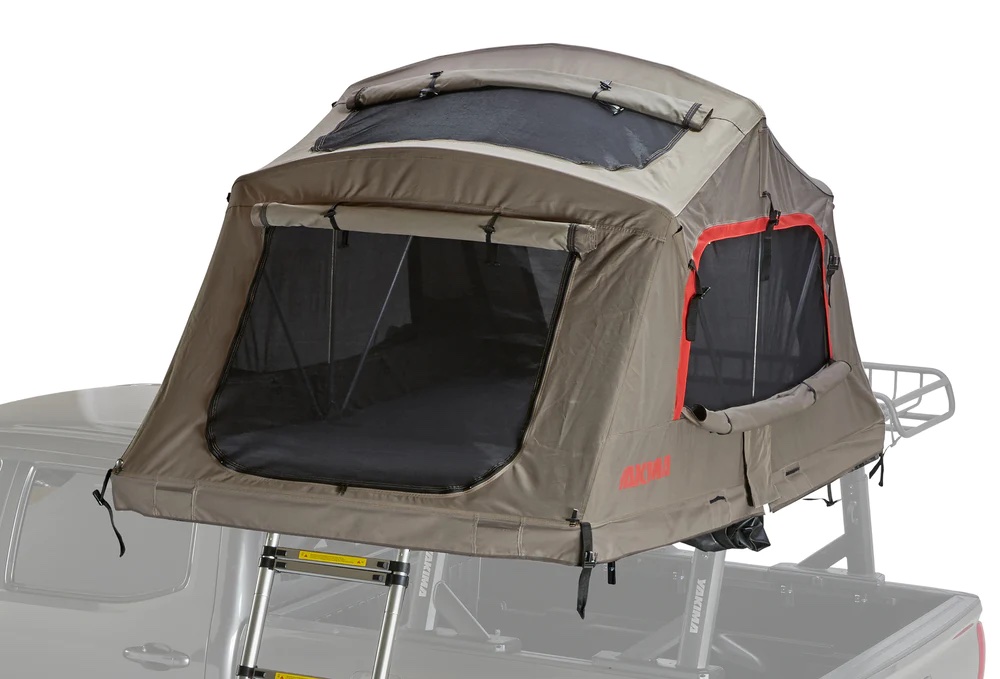
If you’re camping with family or friends, the Yakima SkyRise HD is a great 3-person rooftop tent that blends functionality with value. It’s incredibly easy to mount, and once it’s in place, it locks securely to your vehicle’s roof.
The interior offers enough room for three adults or two adults and two kids. While it lacks some premium materials, it still holds up well in most conditions. One drawback is its lighter-weight fabrics, which can flap in the wind more than heavier canvas options.
For overlanders who prioritize ease of use, simple installation, and enough room for small groups, the SkyRise HD is a dependable option that won’t weigh down your roof too much.
Specifications
-
Dimensions open: 96″ x 56″ x 48″
-
Dimensions closed: 58″ x 48″ x 17″
-
Sleeping footprint: N/A
-
Peak internal height: N/A
-
Weight: 115 lbs.
-
Static weight capacity: N/A
-
Minimum bar spread: 26″
Pros
-
Super easy to mount
-
Locks securely to your roof
Cons
-
Lighter fabrics flap more on windy nights
Price
$2,499
Best Four-Season Rooftop Tent
Roofnest Falcon 3 EVO
Rating: 8.0/10
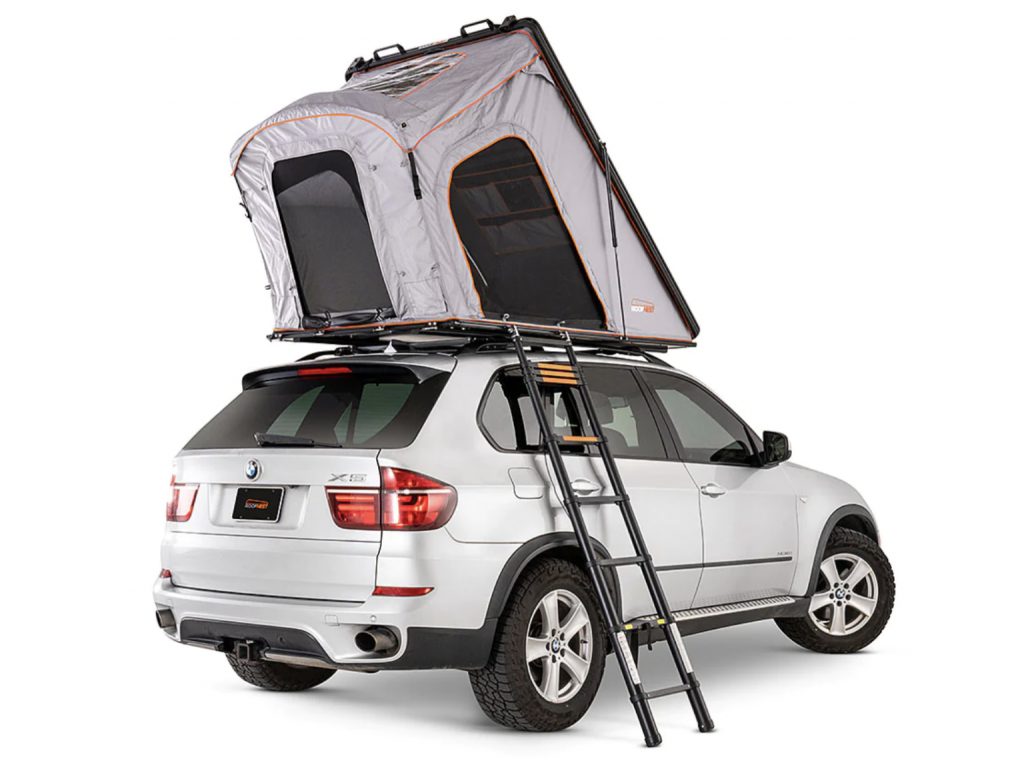
The Roofnest Falcon 3 EVO earns its title as the best four-season rooftop tent in 2025 by striking a balance between aerodynamic design, rugged durability, and year-round comfort. This sleek, low-profile tent is just 8 inches tall when closed, yet it offers enough internal height and sleeping space to comfortably fit two adults.
Its true four-season capabilities are a standout feature—weather-resistant materials and an optional insulation kit allow it to perform in extreme cold, wind, or heat. Despite its slim design, it even has room to store your bedding inside, saving time and hassle during setup and takedown.
Aerodynamics matter when you’re driving long distances, and the Falcon 3 EVO shines here—its aluminum shell is designed to reduce drag and wind noise. Plus, for those who need more space, an XL version is available.
The main drawback is its price—at $3,495, it’s on the higher end of the rooftop tent market. But for serious adventurers and overlanders who travel year-round, it’s a top-tier investment.
Specifications
-
Dimensions open: 83” x 50” x 58”
-
Dimensions closed: 83” x 50” x 8”
-
Sleeping footprint: 80” x 47”
-
Peak internal height: 58”
-
Weight: 140 lbs.
-
Static weight capacity: 650 lbs.
-
Minimum bar spread: N/A
Pros
-
Four-season ready
-
Extra aerodynamic
-
Super slim but able to store bedding
-
Optional insulation kit
-
Available in XL
Cons
-
One of the pricier tents
Price
$3,495
Best Rooftop Tent for Overlanding
iKamper BDV Duo
Rating: 7.8/10
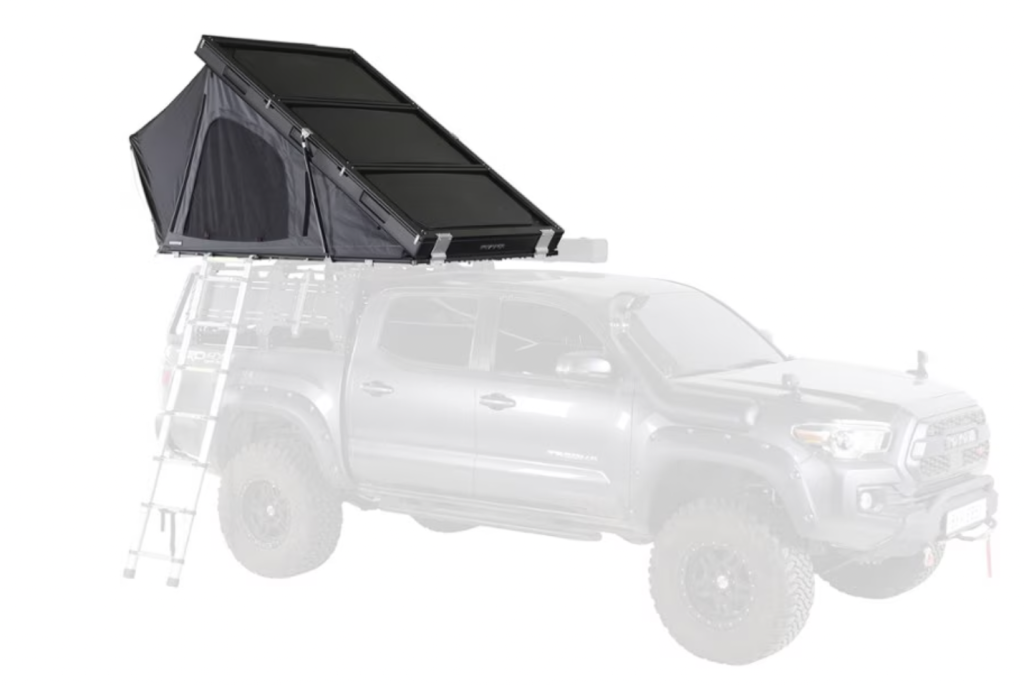
The iKamper BDV Duo is tailor-made for hardcore overlanders who need a rugged, reliable tent with quick deployment and weather resistance. Designed with versatility in mind, it’s a four-season tent built to withstand the rigors of extended off-grid travel.
What sets the BDV Duo apart is its ultra-fast setup—you can deploy it in under a minute, and its clamshell design keeps it low-profile on your vehicle roof. At under 7 inches tall when closed, it cuts down on drag while offering robust shelter once open.
The tent includes a large sleeping footprint, low condensation build quality, and a suite of available accessories like awnings, insulation kits, and crossbars. It’s also built from top-tier materials that are made to last on tough expeditions.
Still, at 200 lbs., it’s one of the heaviest rooftop tents on the list, and it only allows for sleeping in one direction, which could feel restrictive. Additionally, relocating the ladder can be a minor hassle due to the design of the mounting pins.
Specifications
-
Dimensions open: 59” x 90” x 56”
-
Dimensions closed: 6¾” x 90” x 56”
-
Sleeping footprint: 83¾” x 53¾”
-
Weight: 200 lbs.
-
Static weight capacity: N/A
-
Minimum bar spread: N/A
Pros
-
Four-season
-
Spacious
-
Super-fast setup
-
Low condensation
-
Loads of accessories
-
Low profile — under 7”
Cons
-
Heavy
-
Can sleep in only one direction
-
One set of ladder pins has to be moved to relocate ladder
Price
$2,799
Other Excellent RTTs
Thule Tepui Foothill
Price: $2,000
Rating: 7.1/10
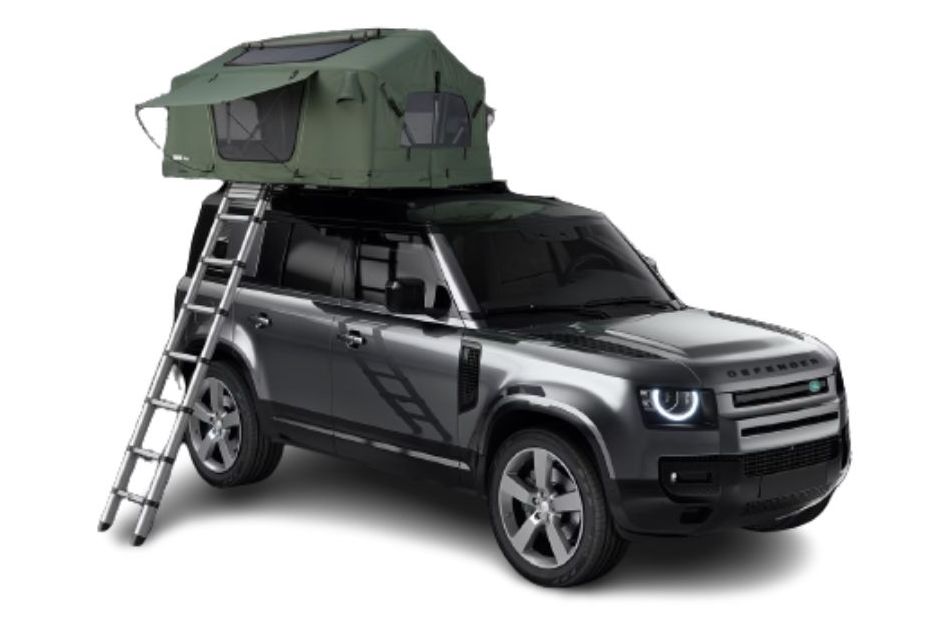
The Thule Tepui Foothill is a uniquely designed rooftop tent that folds compactly to just half the width of most RTTs, allowing you to retain valuable roof rack space for bikes, boards, or other gear. Despite its slender packed profile, it opens up to provide a roomy sleeping space for two adults.
Ideal for smaller vehicles or for those who want to retain full roof functionality, the Tepui Foothill makes efficient use of space while still offering robust materials and thoughtful design. That said, it has a few compromises: there’s no vestibule option, the ladder must be stored separately, and it’s a bit awkward to deploy for a two-person tent.
Still, for its price and niche capability, this is a smart pick for adventurers needing a space-saving RTT without skimping on durability.
Specifications
-
Dimensions open: 84″ x 47″ x 40″
-
Dimensions closed: 83″ x 24″ x 9.5″
-
Sleeping footprint: 84″ x 47″
-
Peak internal height: 38″
-
Weight: 108 lbs.
-
Static weight capacity: 400 lbs.
-
Minimum bar spread: 24″
Pros
-
Spacious
-
Allows additional gear to be mounted on roof
Cons
-
No compatible vestibule
-
Slightly awkward for two people to manage
-
Ladder must be stored outside the packed tent
Dometic TRT 140 Air
Price: $2,500
Rating: 8.1/10
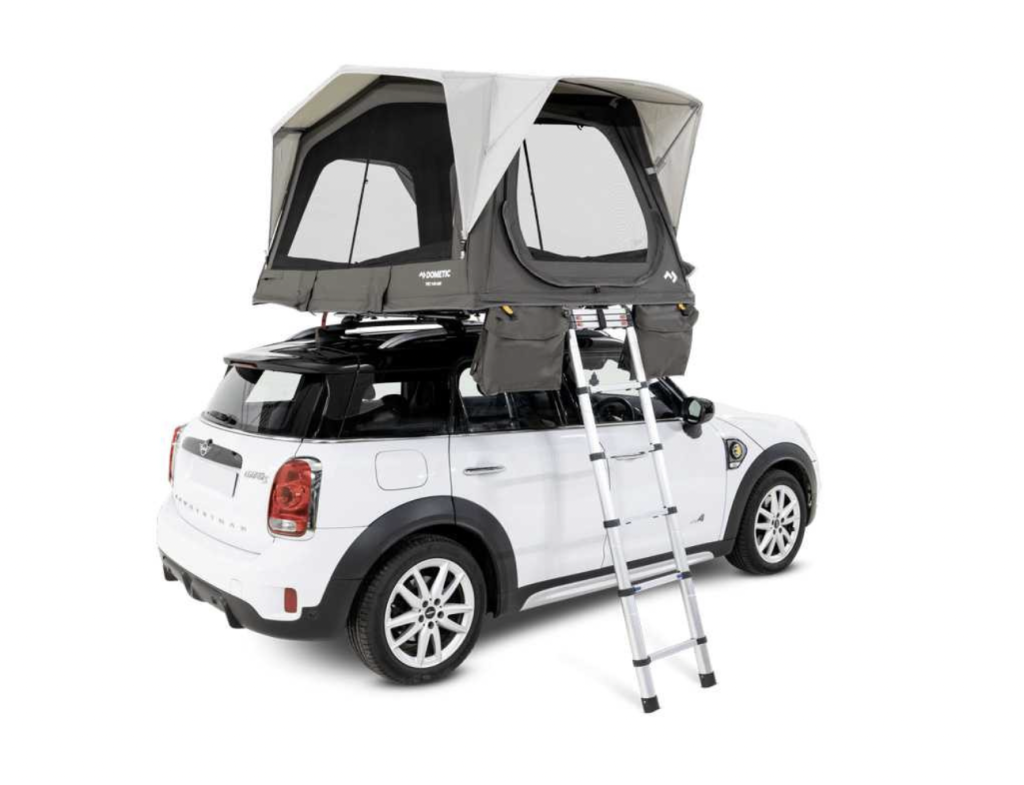
The Dometic TRT 140 Air stands out thanks to its inflatable frame structure—a rarity in rooftop tents. That airframe makes setup lightning fast and eliminates fiddly poles. Despite weighing just over 100 lbs., it remains durable and well-ventilated, making it ideal for weekenders and lightweight travelers.
It includes thoughtful features like an anti-condensation mat, comfortable mattress, ample storage inside and out, and it supports tool-free installation. Being inflatable, it requires more care to avoid punctures, and there’s no space to store bedding inside when folded.
This is one of the most compact and beginner-friendly RTTs available, perfect for those prioritizing ease of use and weight savings over heavy-duty features.
Specifications
-
Dimensions open: 86” x 57” x 45”
-
Dimensions closed: 86” x 57” x 13”
-
Sleeping footprint: N/A
-
Peak internal height: N/A
-
Weight: 103.7 lbs.
-
Static weight capacity: N/A
-
Minimum bar spread: 28”
Pros
-
Anti-condensation mat under mattress
-
Thin, comfortable mattress
-
Interior and exterior storage pockets
-
Excellent ventilation
-
Fast, tool-free setup
-
Extremely compact and lightweight
-
Accessory crossbar compatible
Cons
-
No room for blankets/pillows when folded
-
Vulnerable to punctures (being inflatable)
-
Slightly noisier on the roof
-
Ladder must be stored externally
Sylvan Sport Loft
Price: $2,195
Rating: 7.0/10
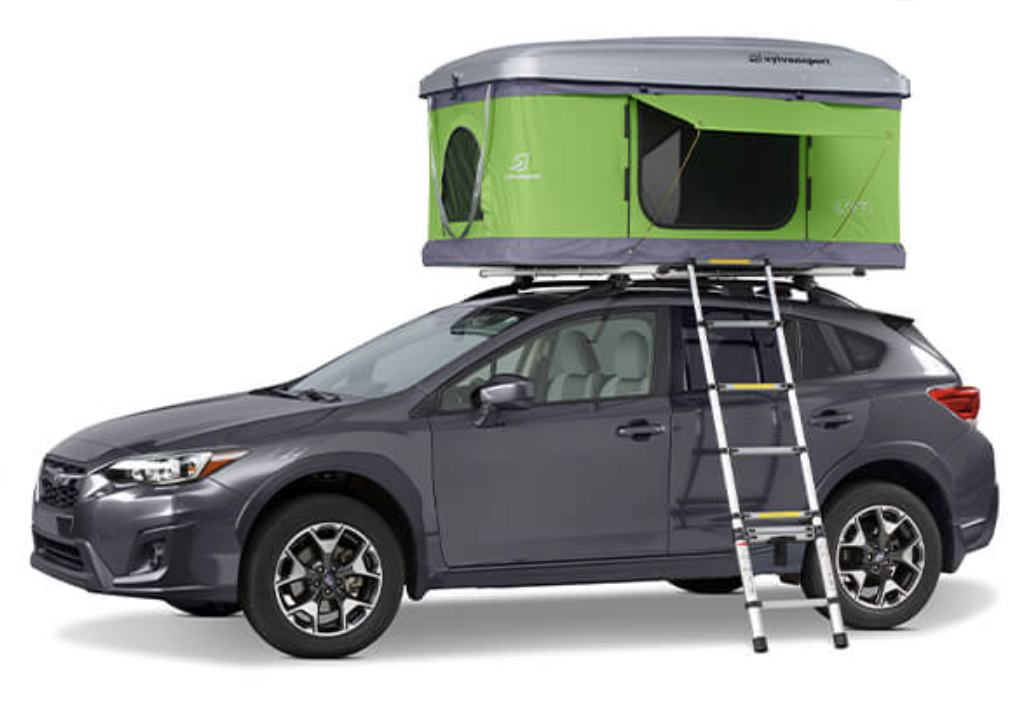
The Sylvan Sport Loft delivers a versatile, compact rooftop tent with user-friendly features that make it great for frequent travelers. It offers a fast setup, low profile, and fits on a wide range of vehicles, while still including creature comforts like a fan/light combo and high-capacity ceiling nets.
Its standout feature is the expansive ceiling storage, but that also reduces interior headroom slightly. The mattress is simpler than premium models, and the mounting hardware requires tools, which could slow down the installation process.
Still, for the price, it’s a dependable and smart choice—especially for those who want simplicity without sacrificing key comforts.
Specifications
-
Dimensions open: 82.6” x 50.7” x 41.3”
-
Dimensions closed: 82.6” x 50.7” x 11”
-
Sleeping footprint: 48″ x 80″
-
Peak internal height: 39″
-
Weight: 116.8 lbs
-
Static weight capacity: 480 lbs
-
Minimum bar spread: N/A
Pros
-
Compact enough for most vehicles
-
Quick setup and takedown
-
Massive ceiling storage
-
Built-in fan/light combo
Cons
-
Smaller windows compared to other tents
-
Basic mattress
-
Requires tools for mounting
-
Storage pockets obstructed by hydraulic arms
-
Overhead nets reduce headroom
Rooftop Tent Comparison Table
| Tent Model | Rating | Type | Weight | Open Dimensions | Closed Dimensions | Sleeps | Price |
|---|---|---|---|---|---|---|---|
| Thule Approach M | 7.9/10 | Soft Shell | 128 lbs | 95″ x 56″ x 40″ | 49″ x 56″ x 11″ | 2+ | $2,500 |
| James Baroud Odyssey | 9.0/10 | Hard Shell | 155 lbs | 79″ x 55″ x 40″ | 79″ x 55″ x 13.5″ | 2 | $4,895 |
| Yakima SkyRise HD | 7.3/10 | Soft Shell | 115 lbs | 96″ x 56″ x 48″ | 58″ x 48″ x 17″ | 3 | $2,499 |
| Roofnest Falcon 3 EVO | 8.0/10 | Hard Shell | 140 lbs | 83″ x 50″ x 58″ | 83″ x 50″ x 8″ | 2 | $3,495 |
| iKamper BDV Duo | 7.8/10 | Hard Shell | 200 lbs | 59″ x 90″ x 56″ | 90″ x 56″ x 6.75″ | 2 | $2,799 |
| Thule Tepui Foothill | — | Soft Shell | 108 lbs | 84″ x 47″ x 40″ | 83″ x 24″ x 9.5″ | 2 | $2,000 |
| Dometic TRT 140 Air | — | Inflatable/Soft | 103.7 lbs | 86″ x 57″ x 45″ | 86″ x 57″ x 13″ | 2 | $2,500 |
| Sylvan Sport Loft | — | Soft Shell | 116.8 lbs | 82.6″ x 50.7″ x 41.3″ | 82.6″ x 50.7″ x 11″ | 2 | $2,195 |
How We Tested the Best Rooftop Tents
We evaluated each rooftop tent using a combination of hands-on field testing, detailed spec analysis, and user feedback. Our goal was to represent a variety of needs—from lightweight setups for weekend warriors to rugged models for serious overlanders.
Here’s how we assessed each tent:
1. Setup and Breakdown
We measured how quickly and easily each tent could be deployed and packed up, including ladder use, cover removal, and rainfly installation.
2. Comfort
We considered mattress thickness, ventilation, blackout features, and space for bedding storage.
3. Durability & Weather Resistance
We tested the materials (canopy, rainfly, and cover), internal condensation control, and performance in wind and rain.
4. Weight and Size
Since rooftop tents vary greatly in size and weight, we accounted for how they affect vehicle handling, rooftop space usage, and compatibility.
5. Special Features
Blackout curtains, anti-condensation mats, aerodynamic profiles, fan/light combos, and extra storage were all considered in the scoring.
6. Value for Money
We assessed whether the tent’s features and quality justified its price point.
This testing methodology allowed us to recommend the best rooftop tents across different categories—soft shell, hard shell, premium, 3-person, and four-season—so that you can find the right RTT for your adventures.
Price & Value
Rooftop tents tend to cost significantly more than traditional ground tents due to the rugged materials and engineering required to build them. They are designed with a solid, stable base—some of which fold compactly for storage without compromising strength. Unlike ground tents, rooftop tents must endure elevated exposure to wind, rain, and extreme weather conditions. As semi-permanent fixtures mounted on your vehicle’s roof, they must be highly weather-resistant, durable, and secure, especially when you’re driving at high speeds.
That level of reliability demands more sophisticated construction than a simple ground tent. Factors like tent size, setup mechanism, and added features also influence pricing. The safety and comfort of sleeping atop your car call for high-quality design, especially when you’re covering long distances or venturing into remote areas.
Budget
Entry-level rooftop tents, usually priced under $2,000, tend to feature soft shell designs that require more time to set up and pack away. Despite their lower cost, many of these options still offer impressive features. For example, the Topoak Galaxy 1.0 ($1,299) is our top budget pick, combining a straightforward setup process with a solid set of comfort-focused features at an unbeatable price.
Mid-Tier
In the $2,000 to $3,000 price range, you’ll begin to see faster-deploying hardshell models and upgraded materials. The SylvanSport Loft ($2,195) is lightweight, sets up quickly, and includes a built-in fan for airflow and moisture control—ideal for weekend adventurers.
The Yakima SkyRise HD ($2,499), a softshell tent, comfortably sleeps three and is easy to mount. Meanwhile, the Thule Approach M ($2,500) stands out as our favorite softshell option for two people, with an ultra-comfortable mattress and a highly weatherproof rainfly. While mid-tier models provide decent quality and usability, most are not insulated, which can limit their performance in extreme weather or long-term use.
Premium
Premium rooftop tents, starting around $3,000, are engineered for all-season, all-terrain adventure. These models often use high-end materials such as polyurethane-coated fabrics and poly-cotton blends—similar to expedition-grade wall tents. Many come with built-in insulation or offer add-on kits, and they’re designed for ultra-fast setup and takedown.
The James Baroud Odyssey ($4,995) is a standout in this category. It offers true blackout fabric, noise reduction, and can be fully set up in under a minute—perfect for sleeping anywhere in comfort and silence.
Our top premium choice, the Skycamp Mini 3.0 ($3,979), features a waterproof poly-cotton shell, excellent ventilation, large windows, and room to move around. It’s a great pick for travelers who value convenience and comfort. The Roofnest Falcon 3 EVO ($3,495) delivers similar performance, offering interior LED lighting, optional insulation, and extra rack space to haul more gear.
Buyer’s Guide: How to Choose the Best Rooftop Tent
Choosing the right rooftop tent (RTT) requires understanding your needs, your vehicle’s specifications, and the environments you’ll camp in. Here’s a detailed buyer’s guide to help you make the most informed decision.
What Fits Your Vehicle?
Before anything else, verify that your vehicle can support a rooftop tent. This includes checking the dynamic (moving) and static (parked) weight capacities of your vehicle’s roof and crossbars. Most RTTs range between 100–200 lbs, and while many SUVs, trucks, and some sedans can support them, it’s essential to consult your owner’s manual or contact the manufacturer for exact specs.
Additionally, consider the roof rack system. Not all racks are compatible with all tents, especially hard shell models. Ensure your rack has adequate load capacity and bar spread to safely mount the tent.
What Else Do You Need to Carry?
If you’re packing bikes, kayaks, solar panels, or storage boxes on your roof, you’ll need to account for space and weight. Some tents like the Thule Tepui Foothill fold compactly, leaving room for other gear. However, large hard shells like the iKamper BDV Duo may occupy your entire roof.
Think through your usual gear loadout before selecting a tent. If space is tight, consider compact or inflatable models with additional interior storage solutions.
Hardshell vs. Softshell
This is one of the biggest decisions you’ll make:
- Hardshell RTTs: Offer faster setup and pack-down, superior aerodynamics, and better durability. They often have room for bedding inside when closed. Downsides include heavier weight and higher price.
- Softshell RTTs: Generally lighter and less expensive. They offer more flexible layouts and often come with larger annexes. However, they take longer to set up and don’t always store bedding inside.
Choose hard shell for convenience and weather resistance. Choose soft shell if you prioritize space, lighter weight, or a tighter budget.
Space vs. Weight
Most rooftop tents are designed for 2 to 3 people, but their weight can be significant. Balance your need for space against what your vehicle can realistically carry. Lightweight models like the Dometic TRT 140 Air (around 103 lbs) are great for fuel efficiency and smaller vehicles.
Heavier tents like the iKamper BDV Duo (200 lbs) offer more space and features, but may require upgraded suspension or special roof racks. Remember: the more weight on your roof, the higher your center of gravity, which affects vehicle handling.
Manual vs. Automatic Opening
Manual-opening tents require unlatching and unfolding fabric walls and rainflies, sometimes with poles. These setups can take 5–15 minutes. Automatic or assisted-opening tents (common with hardshells) often use gas struts or air pressure to pop open in under a minute.
If you move camp often or arrive late, quick-deploy tents are worth the premium. For occasional trips or longer stays, manual tents can still be a solid choice.
Durability
Look at materials:
- Canopy: 600D or higher polyester resists wear and UV damage.
- Rainfly: Coated nylon or polyester with taped seams ensures waterproofing.
- Flooring: Rigid aluminum or fiberglass bases are better than fabric or plastic.
- Mattress: A dense foam mattress (2.5″+) adds comfort and insulation.
Also, inspect ladder construction, zipper quality, and window mesh. Tents from top brands like Thule and James Baroud are built to last, even in extreme conditions.
Frequently Asked Questions
What is the benefit of a rooftop tent?
Rooftop tents elevate you above uneven, wet, or rocky ground, offering a flat, secure sleeping area anywhere your vehicle can go. They also keep you safer from critters and insects and often provide faster setup than ground tents. Many models come with built-in mattresses for extra comfort.
Can you put a rooftop tent on a car?
Yes, but with caution. Many sedans and hatchbacks can accommodate a rooftop tent, provided they have a strong enough roof rack and meet the required dynamic and static weight capacities. Always check your vehicle’s load ratings before purchase.
What is the cheapest rooftop tent?
Soft shell tents are typically the most affordable. Entry-level models can start at around $1,000–$1,500. Among the reviewed options, the Thule Tepui Foothill at around $2,000 is one of the more budget-friendly tents from a reputable brand.
Will a rooftop tent affect my gas mileage?
Yes. Any rooftop addition affects your vehicle’s aerodynamics and adds weight, which can reduce fuel efficiency. Hardshell tents tend to be more aerodynamic, while softshell tents can catch more wind. Expect a mileage drop of 1–5 mpg depending on tent size, shape, and driving speed.
If I want to bring my dog into my rooftop tent, how do I do it?
Many campers bring dogs into their RTTs using a dog ramp, harness system, or by lifting them. Some manufacturers offer dog-friendly accessories like annexes or side room ladders. Always check the weight limits and test it out before your trip.
My rooftop tent ladder hurts my feet. What should I do?
Barefoot climbs on aluminum ladders can be painful. Use grippy ladder covers or padded wraps to cushion the rungs. Wearing shoes or sandals with thick soles also helps.
Should I buy an awning?
If you want extra shade, rain protection, or cooking space, an awning is a great accessory. Some rooftop tents come with optional awnings or annexes. They’re particularly useful in hot or wet climates.
How hard is it to install a rooftop tent on my car?
Installation usually takes about 1–2 hours for two people. You’ll need to lift the tent onto the roof rack and secure it with mounting brackets. While it’s not complicated, the weight and size of the tent make it a two-person job. Some models, like the Dometic TRT 140 Air, offer tool-free installation.
Can I heat my rooftop tent?
Yes, but cautiously. Portable propane heaters can be used with proper ventilation. Some campers use electric blankets or battery-powered heating pads. Be sure to follow all safety guidelines to prevent carbon monoxide poisoning or fire hazards.
Choosing the right rooftop tent is about understanding your camping style, vehicle limits, and personal comfort needs. With the right tent, your car becomes a cozy, go-anywhere home on wheels.

